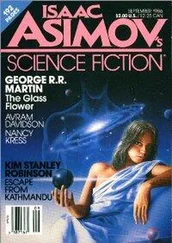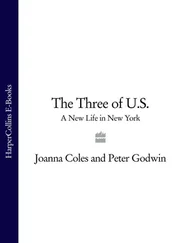So the neighborhood was quiet. They made their way on planks set on cinder blocks to a rude stoopdock, consisting of planks nailed on top of pallet-sized blocks of old Styrofoam, tied in front of a low brownstone on Twenty-ninth. There was no one in sight, which was weird to see. Without intending to they lowered their voices. All the buildings in sight had windows broken, and only some of those were boarded up; many were empty holes, generally a reliable sign of abandonment. There was not a single unbroken glass window to be seen. It was quiet enough that you could clearly hear the slop of waves against walls and the hiss of bubbles bursting, all filling the air with a susurrus that was strangely pleasant to hear, compared to the city’s usual honk and wail.
The two boys looked around to see if anyone was watching. Still no one. They ducked into the brownstone’s open door and made their way up a moldy battered staircase.
Fifth-floor walk-up. Floorboards creaking underfoot. Smell of mildew and mold and unemptied chamber pots. “Essence of New York,” Roberto noted as they shuffled down the dark hallway to the end door. They knocked on it using the old man’s code for his friends, and waited. Around them the building creaked and reeked.
The door opened and the wizened face of their friend peered up at them.
“Ah, gentlemen,” the man said. “Come in. Thanks for dropping by.”
They entered his apartment, which smelled less than the hallway but inevitably did smell. Quite a bit, actually. The old man had long since gotten used to it, they assumed. His room was very shabby, and crowded with books and boxes filled with clothing and crap, but it was orderly for all that. The piles of books were everywhere, often to head height or above it, but they all were foursquare piles, with the biggest books at the bottom, and all the spines facing out for easy reference. Several battery and oil lanterns perched on these stacks. Cabinets had drawers that they knew were full of rolled and folded maps, and the room was dominated by a big cubical map cabinet, chest high. A sink in the corner had a bulb of water draining down through a jumbo lifestraw into a bowl resting in the sink.
The old man knew where everything was and could go to anything he wanted without hesitation. He did sometimes ask them for help in moving books, to get to a large one at the bottom of a pile, but the boys were happy to oblige. The old man had more books than anyone they knew, more in fact than the total of all the other books they had ever seen. Stefan and Roberto didn’t like to talk about this, but neither of them could read. They therefore liked the maps most.
“Have a seat, gentlemen. Would you like some tea? What brings you here today?”
“We found it,” Roberto said.
The old man straightened up, looked at them. “Truly?”
“We think we did,” Stefan said. “There was a big hit on the metal detector, right at the GPS spot you gave us. Then we had to leave, but we marked the spot, and we’ll be able to find it again.”
“Wonderful,” the old man said. “The signal was strong?”
“It was pinging like crazy,” Roberto said. “And the detector was set for gold.”
“Right under the GPS spot?”
“Right under it.”
“Wonderful. Marvelous.”
“But the thing is, how deep could it be down?” Stefan asked. “How deep will we have to dig?”
The old man shrugged, frowned. His face made him look like a child with some kind of wasting disease. “How far down can the metal detector detect?”
“They say ten meters, but it depends on how much metal, and how wet the ground is, and things like that.”
He nodded. “Well, it could be that deep.” He limped over to his map cabinet and pulled out a folded map. “Here, look at this.”
They sat on each side of him. The map was a USGS topographical map from before the floods, of Manhattan and some of the surrounding harbor area. It had both elevation contour intervals and streets and buildings—a very crowded map, on which the old man had also drawn the original shorelines of the bay in green, and the current shorelines in red. And there in the south Bronx, inland from the shore as drawn by the USGS mapmakers, but underwater when considering both the red and the green lines, was a black X. Hexter tapped it with his forefinger, as always; the middle of the X was even a little worn.
“So, you know how I told you before,” he said, his usual preface. “I told you before, the HMS Hussar takes off from down near Battery Park where the British have their dock. November 23, 1780. One hundred fourteen feet long, thirty-four feet wide, sixth-rate twenty-eight-gun frigate, crew of about a hundred men. Maybe also seventy American prisoners of war. Captain Maurice Pole wants to go through Hell Gate and into Long Island Sound, even though his local pilot, a black slave named Mr. Swan, advises against it as being dangerous. They get most of the way through Hell Gate but run into Pot Rock, which is a rock shelf sticking out from Astoria. Captain Pole goes down to inspect and sees a giant hole at the bow of the ship, he comes up saying they have to ground the ship and get everyone to shore. The current is carrying them north, so they aim for either Port Morris on the Bronx shore, or North Brother Island, called Montressor’s Island at the time, but glug. Down they go. It all happens too fast and down goes the Hussar, in such shallow water that the masts are still sticking out into the air when it hits bottom. Most of the sailors get to shore alive in boats, although there was a rumor for a while that the seventy American prisoners all drowned, still chained belowdecks.”
“So that’s good, right?” Roberto asks.
“What, that seventy Americans drowned?”
“No, that it was shallow where it went down.”
“I knew you meant that. Yes, it’s good. But very soon afterward, the British got chains under the ship’s hull and dragged it around, trying to pull it back up. But it came apart and they never got the gold. Four million dollars of gold coins to pay British soldiers, in two wooden chests bound with iron hoops. Four million in 1780 terms. The coins would have been guineas or the like, so I don’t know why they always give the value in dollars, but anyway.”
“Lots of gold.”
“Oh yeah. By now that amount of gold would be worth a gazillion.”
“How much really?”
“I don’t know. I think a couple billion.”
“And in shallow water.”
“Right. But it’s murky, and the river moves fast in both directions. It’s only calm there at ebb and full tide, about an hour each, as you boys know. And they broke the ship trying to haul it up, so the ship was distributed up and down the riverbed, probably. Almost certainly. The gold chests probably didn’t move very far. There they are, down there still. But the river keeps changing its banks, ripping them down and building them up. And in the 1910s they filled in the Bronx shore in that area, made some new docks and a loading area behind them. It took me years in the libraries to find the surveying maps that the city workers made before and after that infill. Plus I found a map from the 1820s that showed where the British went when they came here and tried to pull the ship up. They knew where it was, and twice they tried to salvage it. For sure they were going for the gold. So I was able to put all that together and mark it, and later I figured out the GPS coordinates for the spot. And that’s what you went to. And there it was.”
The boys nodded.
“But how deep?” Roberto prompted, after Hexter seemed to be taking a little nap.
Hexter started upright and looked at the boys. “The ship was built in 1763 and had twenty-eight cannons. One of which they pulled up and put in Central Park, and only found out later it had a cannonball and gunpowder rusted inside it. They had to defuse it with a bomb squad! So anyway, sixth-raters like that had a single deck, not that high off the water. About ten feet. And the masts were still sticking out of the water, so that means it sank in something between fifteen and say forty feet, but the river isn’t that deep so close to shore, so say twenty feet. Then they filled in that part of the river, but only a few feet higher than high tide, no more than eight feet. And now sea level is said to be about fifty feet higher than back then, so, what, you’re hitting bottom at forty feet down?”
Читать дальше













